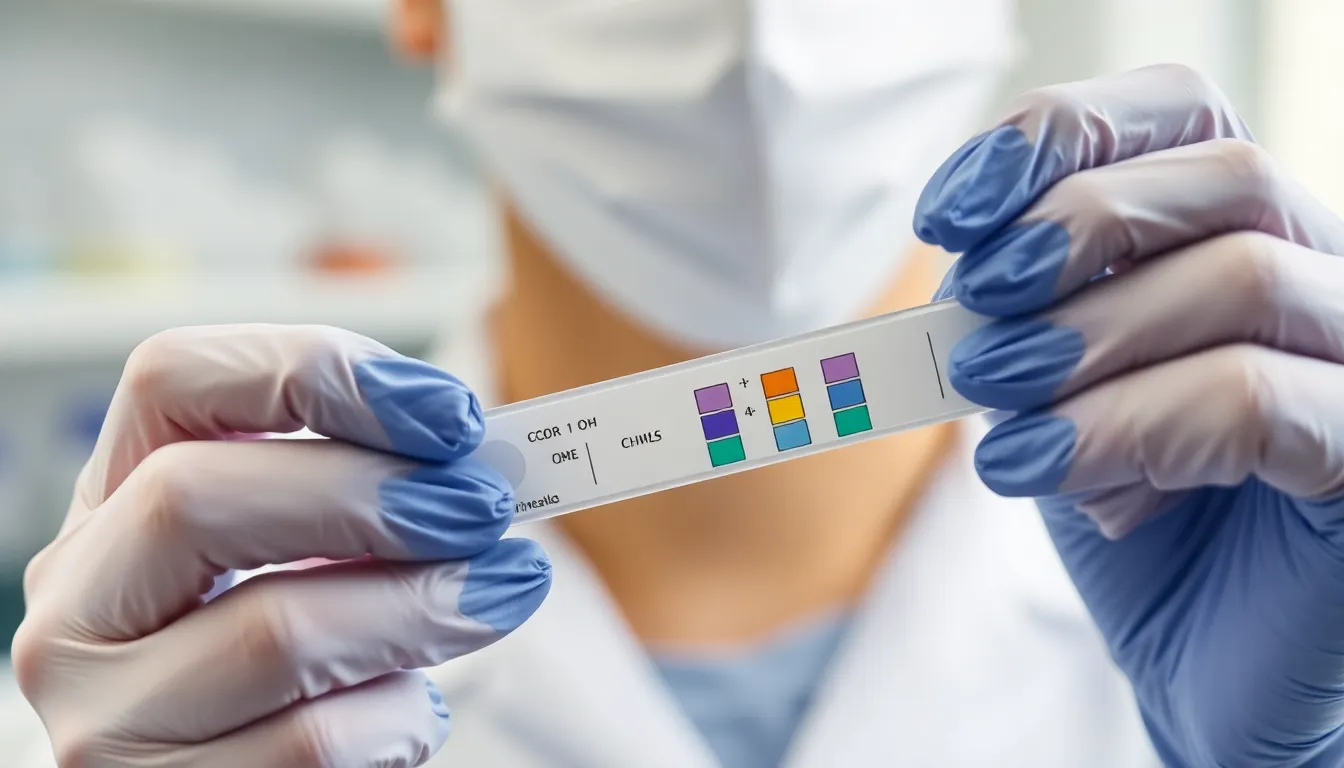Ever noticed tiny bubbles dancing in your urine? While it might seem like a quirky party trick your body’s throwing, it’s actually worth paying attention to. Those little bubbles can be more than just a fizzy surprise; they might hint at what’s happening inside.
Table of Contents
ToggleUnderstanding Tiny Small Bubbles in Urine
Tiny bubbles in urine can signal various health concerns. Identifying possible causes helps determine whether these bubbles warrant further investigation.
Possible Causes
Several factors contribute to the formation of tiny bubbles in urine. Dehydration often leads to concentrated urine, creating bubbles. Additionally, proteins in urine from conditions like proteinuria may produce foamy urine. Infections in the urinary tract can also cause bubbles, prompting changes in urine color and odor. Overactive bladder activity correlates with the presence of bubbles, indicating fluid dynamics within the system. Each of these causes requires attention, as they might reflect underlying health issues.
When to Seek Medical Attention
Medical attention is crucial if tiny bubbles persist in urine for several days. It’s advisable to consult a healthcare professional if the urine appears cloudy or has a strong odor alongside bubbles. Unexplained symptoms, such as abdominal pain or frequent urination, warrant investigation. Chronic bubbles paired with weight loss or fatigue signal potential underlying health problems. Early detection often results in better management of any detected conditions.
The Role of Urinalysis

Urinalysis plays a crucial role in identifying potential health issues linked to tiny bubbles in urine. This simple test can reveal important information regarding an individual’s health status.
What Urinalysis Reveals
Urinalysis checks for various components, including proteins, glucose, and bacteria. Presence of proteins may indicate proteinuria, a condition associated with kidney damage. Glucose in urine often points to possible diabetes, providing early insights into metabolic health. Signs of bacteria can signify a urinary tract infection, warranting further evaluation. Microscopic examination may also reveal red and white blood cells, indicating inflammation or infection. Additionally, a specific gravity test evaluates hydration levels, helping to pinpoint dehydration as a factor in bubble formation. By analyzing these elements, healthcare providers gain valuable insights into an individual’s overall health.
Health Implications
Tiny bubbles in urine can indicate various health implications. Understanding these potential concerns encourages individuals to seek medical advice.
Potential Conditions
Proteinuria often causes tiny bubbles, indicating potential kidney damage. Diabetes may lead to glucose presence in urine, raising the risk of bubbles forming. Urinary tract infections frequently manifest with bubbles, as bacteria affect urine composition. Dehydration reduces urine concentration, contributing to bubble formation. An overactive bladder can also result in increased air entrapment, causing bubbles. Chronic conditions, including hypertension and heart disease, might require closer monitoring due to associated kidney stress. Individuals experiencing persistent bubbles should consult healthcare professionals for appropriate tests and diagnosis.
Home Remedies and Lifestyle Changes
Staying hydrated can significantly improve urine quality. Drinking adequate water helps dilute urine, reducing bubble formation. Incorporating more water-based foods, such as cucumbers and watermelon, also aids hydration.
Adjusting one’s diet can benefit overall urinary health. Consuming foods rich in antioxidants, such as berries and leafy greens, supports the immune system. Reducing processed foods and sugars can further decrease the risk of urinary tract infections.
Regular exercise supports not only overall health but also bladder function. Engaging in physical activity enhances circulation and can help maintain a healthy weight, reducing pressure on the bladder. Activities like walking, cycling, or yoga promote well-being.
Practicing good hygiene remains essential for preventing infections. Wiping from front to back after using the restroom helps reduce bacteria near the urinary tract. Wearing breathable underwear, like cotton, can also minimize moisture accumulation and prevent bacterial growth.
Monitoring symptoms can provide valuable information about urinary health. Keeping a journal of dietary habits and any changes in urine appearance can aid healthcare professionals in diagnosing issues. Noting patterns aids in understanding personal health better.
Utilizing herbal remedies may offer additional support. Drinking clean cranberry juice can help prevent bacterial infections in the urinary tract. Dandelion tea is another option, as it acts as a diuretic and may support kidney function.
By integrating these changes and remedies into daily routines, individuals can promote better urinary health. Regular check-ups with healthcare professionals to discuss any persistent symptoms remain essential for managing potential underlying conditions effectively.
Tiny bubbles in urine shouldn’t be overlooked as they can indicate underlying health issues. Recognizing the potential causes and seeking medical advice when necessary is crucial for maintaining overall health. By staying informed and proactive, individuals can address any concerns early on and implement lifestyle changes that promote better urinary health. Regular check-ups and open communication with healthcare professionals play essential roles in managing potential conditions effectively. Prioritizing hydration and a balanced diet can further support urinary function and well-being.



